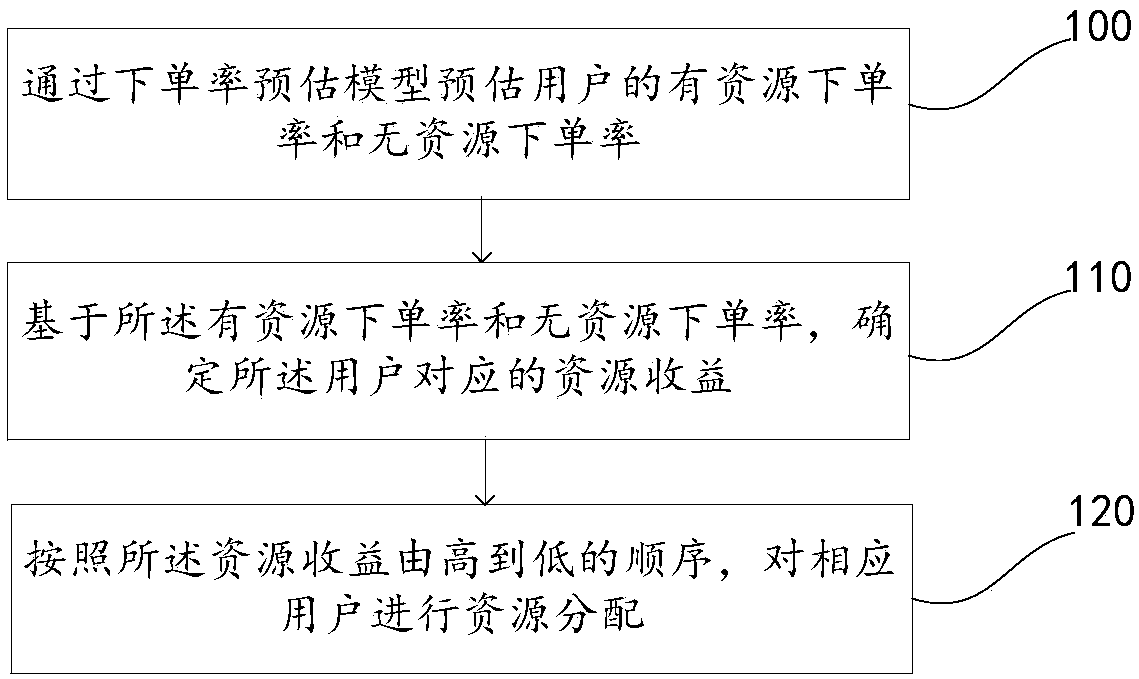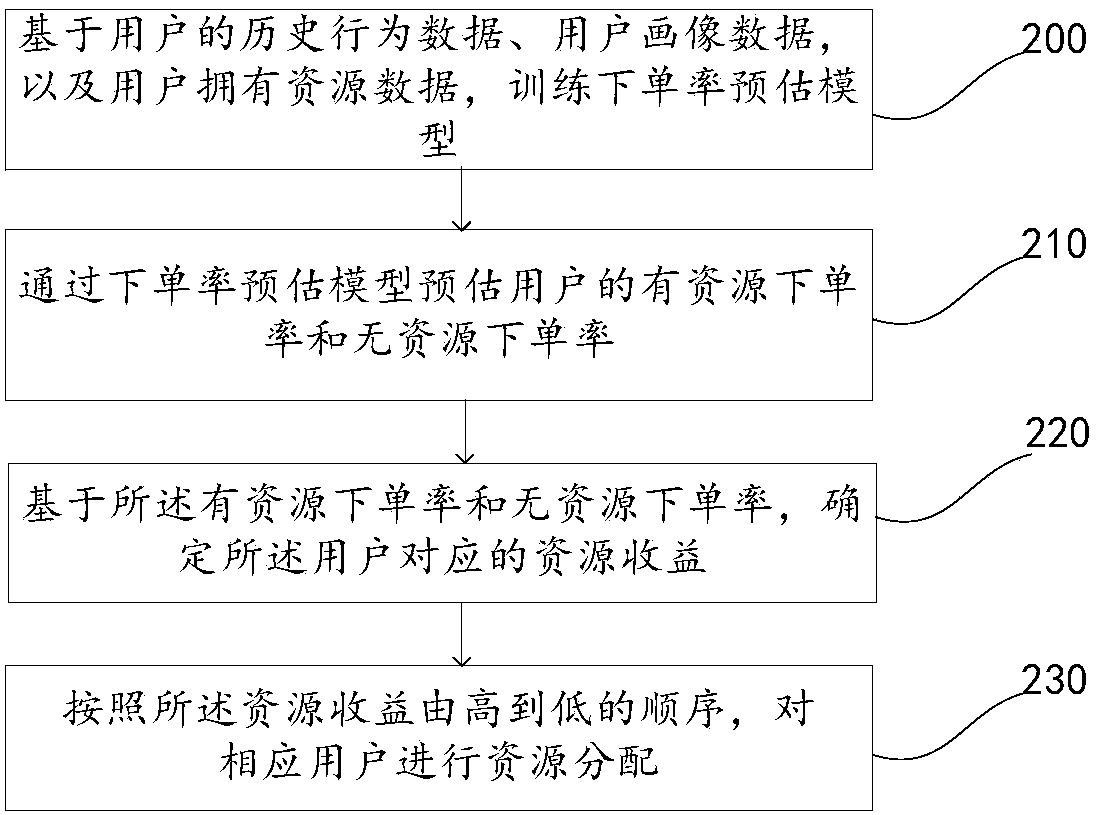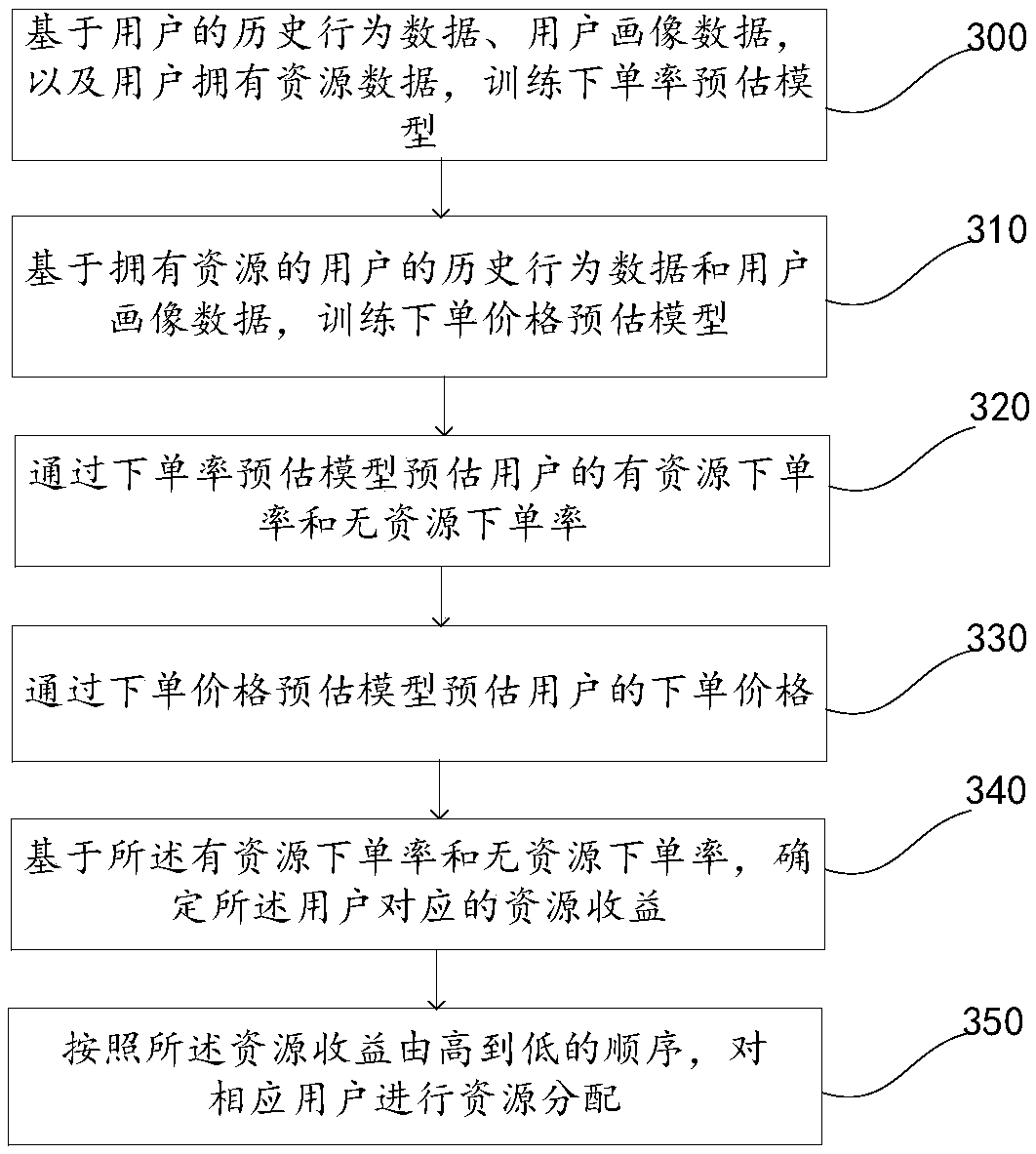Resource distribution method and device and electronic equipment
A resource allocation and resource technology, applied in the computer field, can solve problems such as low allocation accuracy, and achieve the effect of improving accuracy and resource utilization efficiency
- Summary
- Abstract
- Description
- Claims
- Application Information
AI Technical Summary
Problems solved by technology
Method used
Image
Examples
Embodiment 1
[0027] A resource allocation method disclosed in this application, such as figure 1 As shown, the method includes: step 100 to step 120.
[0028] In step 100, the user's order rate with resources and order rate without resources is estimated by the order rate estimation model.
[0029] In the actual implementation of this application, the order rate prediction model must first be trained according to the user's historical behavior data, user portrait data, and user's own resource data. During specific implementation, some user features are extracted according to the user’s historical behavior data (for example: user behavior features of preset behaviors), and the label data is extracted according to the order data in the user’s historical behavior data, and some user profiles are extracted according to the user portrait data. Features (for example: user portrait features), extract some user features (for example: resource features) according to the user's own resource data; t...
Embodiment 2
[0037] A resource allocation method disclosed in this application, such as figure 2 As shown, the method includes: Step 200 to Step 230.
[0038] Step 200, based on the user's historical behavior data, user profile data, and user owned resource data, train an order rate prediction model.
[0039] During specific implementation, based on the user's historical behavior data, user portrait data, and user owned resource data, the order rate prediction model is trained, including: training the order rate prediction model based on the first user characteristic data and the first label data ; Wherein, the first user characteristic data includes: user behavior characteristics of preset behaviors, user portrait characteristics, and resource characteristics used to indicate that the user owns resources; the first tag data is used to indicate whether the user places an order; the The user behavior characteristics of the preset behavior are obtained according to the user's historical be...
Embodiment 3
[0066] A resource allocation method disclosed in this application, such as image 3 As shown, the method includes: Step 300 to Step 350.
[0067] Step 300, based on the user's historical behavior data, user portrait data, and user owned resource data, train an order rate prediction model.
[0068] Based on the user's historical behavior data, user portrait data, and user-owned resource data, see Embodiment 2 for training an order rate prediction model, and details will not be repeated here.
[0069]Step 310, based on the historical behavior data and user profile data of users who own resources, train an order price prediction model.
[0070] During specific implementation, based on the historical behavior data and user portrait data of users who own resources, train the order price prediction model, including: according to the second user characteristic data and second label data of users who own resources, train the order price prediction model Estimation model; wherein, th...
PUM
 Login to View More
Login to View More Abstract
Description
Claims
Application Information
 Login to View More
Login to View More - R&D Engineer
- R&D Manager
- IP Professional
- Industry Leading Data Capabilities
- Powerful AI technology
- Patent DNA Extraction
Browse by: Latest US Patents, China's latest patents, Technical Efficacy Thesaurus, Application Domain, Technology Topic, Popular Technical Reports.
© 2024 PatSnap. All rights reserved.Legal|Privacy policy|Modern Slavery Act Transparency Statement|Sitemap|About US| Contact US: help@patsnap.com










